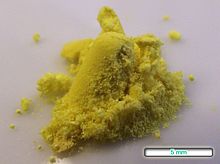 | |||
| |||
| Clinical data | |||
|---|---|---|---|
| Trade names | Adalat, Procardia, others | ||
| AHFS/Drugs.com | Monograph | ||
| MedlinePlus | a684028 | ||
| License data |
| ||
| Pregnancy category |
| ||
| Routes of administration | By mouth, topical | ||
| Drug class | Calcium channel blocker (dihydropyridine)[2] | ||
| ATC code | |||
| Legal status | |||
| Legal status | |||
| Pharmacokinetic data | |||
| Bioavailability | 45-56% | ||
| Protein binding | 92-98% | ||
| Metabolism | Gastrointestinal, Liver | ||
| Elimination half-life | 2 hours | ||
| Excretion | Kidneys: >50%, bile duct: 5-15% | ||
| Identifiers | |||
| |||
| CAS Number | |||
| PubChem CID | |||
| IUPHAR/BPS | |||
| DrugBank | |||
| ChemSpider | |||
| UNII | |||
| KEGG | |||
| ChEBI | |||
| ChEMBL | |||
| CompTox Dashboard (EPA) | |||
| ECHA InfoCard | 100.040.529 | ||
| Chemical and physical data | |||
| Formula | C17H18N2O6 | ||
| Molar mass | 346.339 g·mol−1 | ||
| 3D model (JSmol) | |||
| Melting point | 173 °C (343 °F) | ||
| |||
| |||
| (verify) | |||
Nifedipine, sold under the brand name Procardia among others, is a calcium channel blocker medication used to manage angina, high blood pressure, Raynaud's phenomenon, and premature labor.[2] It is one of the treatments of choice for Prinzmetal angina.[2] It may be used to treat severe high blood pressure in pregnancy.[2] Its use in preterm labor may allow more time for steroids to improve the baby's lung function and provide time for transfer of the mother to a well qualified medical facility before delivery.[2] It is a calcium channel blocker of the dihydropyridine type.[2] Nifedipine is taken by mouth and comes in fast- and slow-release formulations.[2]
Common side effects include lightheadedness, headache, feeling tired, leg swelling, cough, and shortness of breath.[2] Serious side effects may include low blood pressure and heart failure.[2] Nifedipine is considered safe in pregnancy and breastfeeding.[5]
Nifedipine was patented in 1967, and approved for use in the United States in 1981.[2][6][7] It is on the World Health Organization's List of Essential Medicines.[8] It is available as a generic medication.[2] In 2022, it was the 151st most commonly prescribed medication in the United States, with more than 3 million prescriptions.[9][10]
- ^ "Nifedipine Pregnancy and Breastfeeding Warnings". Archived from the original on 21 December 2015. Retrieved 25 December 2015.
- ^ a b c d e f g h i j k "Nifedipine". The American Society of Health-System Pharmacists. Archived from the original on 8 August 2018. Retrieved 17 September 2019.
- ^ "FDA-sourced list of all drugs with black box warnings (Use Download Full Results and View Query links.)". nctr-crs.fda.gov. FDA. Retrieved 22 October 2023.
- ^ "Product monograph brand safety updates". Health Canada. February 2024. Retrieved 24 March 2024.
- ^ "Nifedipine". Drugs and Lactation Database. Bethesda (MD): National Institute of Child Health and Human Development. 15 August 2023. PMID 30000106. Retrieved 14 October 2023.
- ^ Sliskovic DR (2013). "Cardiovascular Drugs". In Li JJ, Corey EJ (eds.). Drug Discovery: Practices, Processes, and Perspectives. Hoboken, NJ: John Wiley & Sons. pp. 141–204. ISBN 9781118354469. Archived from the original on 1 September 2017. Retrieved 20 January 2022. p. 172:
nifedipine...1,4-dihydropyrine originally approved in 1981.
- ^ Fischer J, Ganellin CR (2006). Analogue-based Drug Discovery. John Wiley & Sons. p. 464. ISBN 9783527607495.
- ^ World Health Organization (2023). The selection and use of essential medicines 2023: web annex A: World Health Organization model list of essential medicines: 23rd list (2023). Geneva: World Health Organization. hdl:10665/371090. WHO/MHP/HPS/EML/2023.02.
- ^ "The Top 300 of 2022". ClinCalc. Archived from the original on 30 August 2024. Retrieved 30 August 2024.
- ^ "Nifedipine Drug Usage Statistics, United States, 2013 - 2022". ClinCalc. Retrieved 30 August 2024.

